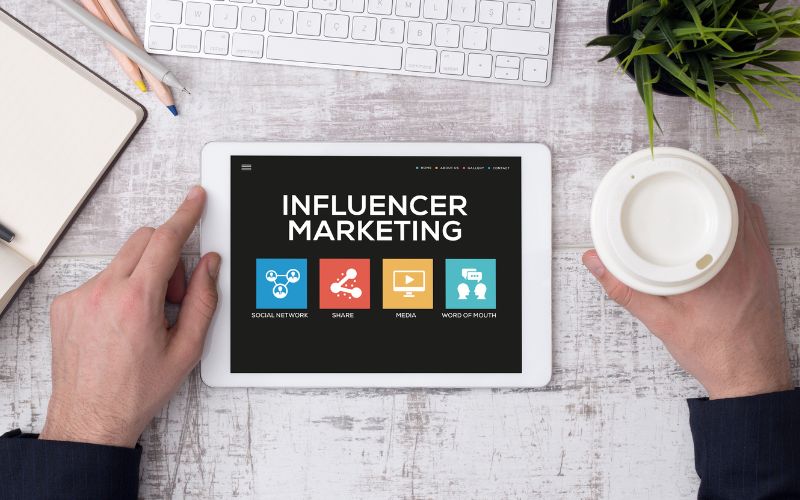The Rise of Influencer Marketing: Collaborating for Success

In the age of digital transformation, influencer marketing has emerged as a powerful strategy for brands to connect with their target audience in an authentic and engaging way. Leveraging the reach and credibility of influencers, brands can enhance their visibility, build trust, and drive significant growth. Here’s an in-depth look at the rise of influencer marketing and how to collaborate for success.
1. Understanding Influencer Marketing
What is Influencer Marketing?
Influencer marketing involves partnering with individuals who have a significant following on social media platforms to promote your products or services. These influencers can be celebrities, industry experts, bloggers, or micro-influencers who have built a loyal and engaged audience.
Why Influencer Marketing Works
- Trust and Authenticity: Influencers are seen as more relatable and trustworthy than traditional advertisements. Their recommendations often carry more weight with their followers.
- Targeted Reach: Influencers have specific niches, allowing brands to reach their ideal audience more effectively.
- Engagement: Influencers create engaging content that resonates with their audience, leading to higher engagement rates compared to traditional marketing methods.
2. Types of Influencers
Macro-Influencers
- Characteristics: Macro-influencers have large followings, typically ranging from hundreds of thousands to millions of followers.
- Benefits: They offer extensive reach and visibility, ideal for large-scale brand awareness campaigns.
- Challenges: High costs and potential for less targeted engagement compared to smaller influencers.
Micro-Influencers
- Characteristics: Micro-influencers have smaller followings, usually between 1,000 and 100,000 followers.
- Benefits: They have highly engaged audiences and can provide more personalized and authentic endorsements.
- Challenges: Limited reach compared to macro-influencers, but often more cost-effective and impactful in terms of engagement.
Nano-Influencers
- Characteristics: Nano-influencers have followings of fewer than 1,000 followers.
- Benefits: Extremely high engagement rates and a strong sense of community and trust.
- Challenges: Very limited reach, but they can be powerful for hyper-local or niche campaigns.
3. Building a Successful Influencer Marketing Strategy
Identify Your Goals
- Brand Awareness: Increase visibility and recognition of your brand.
- Engagement: Foster interaction and engagement with your target audience.
- Conversions: Drive sales, sign-ups, or other specific actions.
Choose the Right Influencers
- Relevance: Ensure the influencer’s content aligns with your brand values and target audience.
- Reach: Consider the size of the influencer’s following and how it fits your campaign goals.
- Engagement: Look at the influencer’s engagement rates to gauge the level of interaction with their audience.
- Authenticity: Choose influencers who genuinely resonate with your brand and are likely to create authentic content.
Create Compelling Campaigns
- Content Collaboration: Work with influencers to create content that is both engaging and aligned with your brand message. This could include sponsored posts, reviews, unboxings, tutorials, or giveaways.
- Authenticity: Allow influencers creative freedom to ensure the content feels genuine and not overly scripted.
- Multi-Platform Approach: Utilize multiple social media platforms to maximize reach and engagement.
4. Measuring Success and ROI
Key Metrics to Track
- Reach and Impressions: Measure how many people saw your content.
- Engagement: Track likes, comments, shares, and overall interaction with the content.
- Conversion Rates: Analyze the number of sales, sign-ups, or other actions taken as a result of the campaign.
- Referral Traffic: Monitor the traffic driven to your website from the influencer’s posts.
Tools for Measurement
- Google Analytics: Track referral traffic and conversions from influencer campaigns.
- Social Media Analytics: Use platform-specific analytics tools (e.g., Instagram Insights, YouTube Analytics) to measure reach and engagement.
- Influencer Marketing Platforms: Utilize platforms like Hootsuite, Sprout Social, or BuzzSumo to manage campaigns and analyze performance.
5. Case Studies and Examples
Case Study: Daniel Wellington
- Strategy: Daniel Wellington, a watch brand, utilized micro-influencers to promote their products on Instagram. Influencers shared discount codes and styled the watches in their everyday outfits.
- Outcome: The campaign resulted in high engagement, significant sales, and substantial growth in brand recognition.
Case Study: Glossier
- Strategy: Beauty brand Glossier leveraged nano-influencers and regular customers to promote their products on social media. They encouraged users to share their experiences using branded hashtags.
- Outcome: This grassroots approach built a strong community around the brand and generated organic, authentic content that resonated with a wider audience.
6. Future Trends in Influencer Marketing
Growth of Micro and Nano-Influencers
- Increased Authenticity: Smaller influencers continue to gain traction due to their authentic connections with their audience.
- Cost-Effective: Brands find micro and nano-influencers more cost-effective, with better engagement rates.
Rise of Video Content
- Platforms: Video-centric platforms like TikTok and YouTube are becoming increasingly popular for influencer campaigns.
- Engagement: Video content tends to have higher engagement rates and provides a dynamic way to showcase products.
AI and Data Analytics
- Enhanced Targeting: AI and data analytics will improve the ability to identify the right influencers and predict campaign outcomes.
- Performance Measurement: Advanced analytics will provide deeper insights into campaign performance and ROI.
Conclusion
Influencer marketing has revolutionized the way brands connect with their audiences. By collaborating with influencers who align with your brand values and have a genuine connection with their followers, you can boost brand awareness, drive engagement, and achieve your business goals. Understanding the different types of influencers, setting clear objectives, creating compelling content, and measuring success are key to a successful influencer marketing strategy. Embrace the power of influencer marketing to build authentic relationships and drive meaningful growth for your brand.
